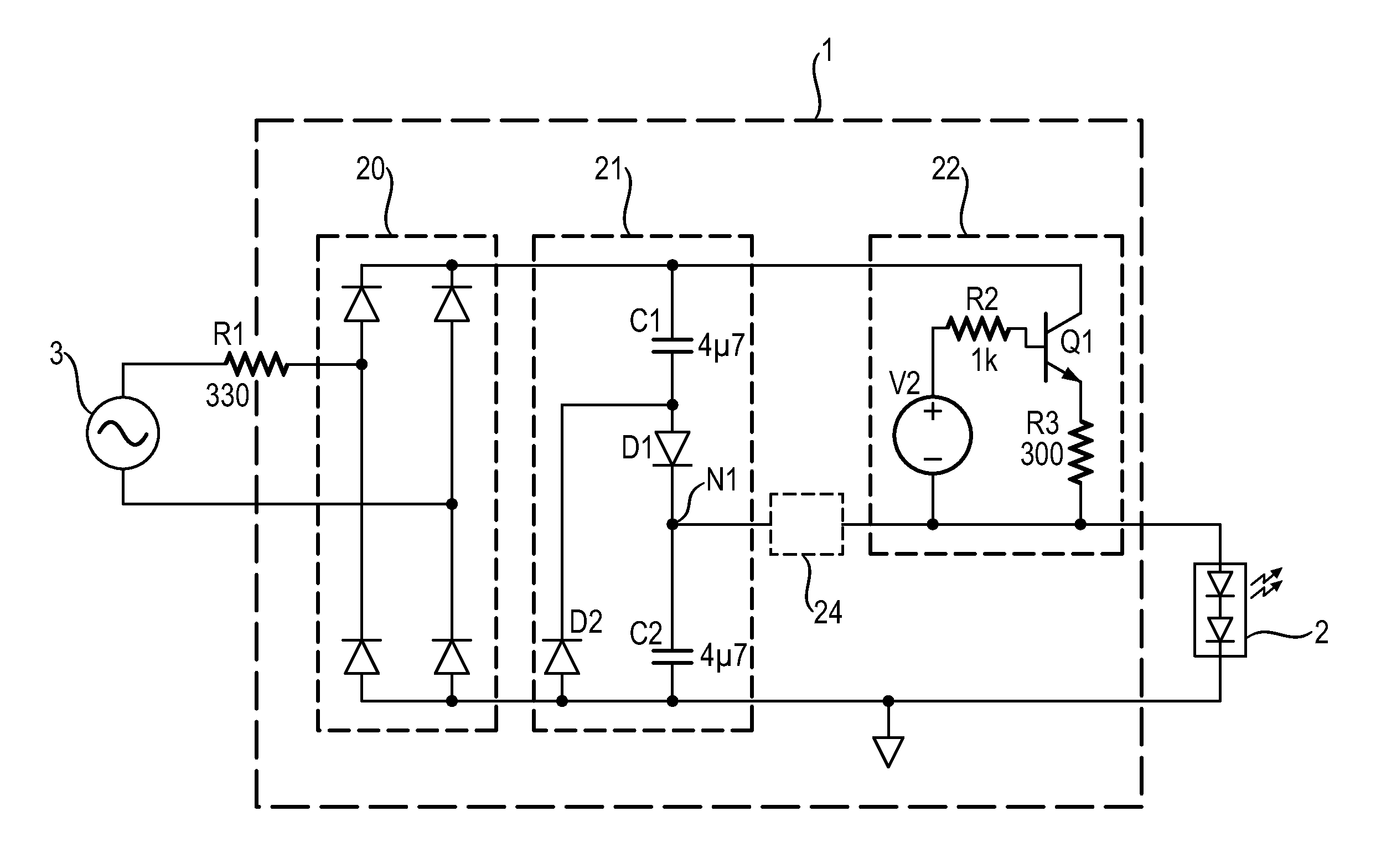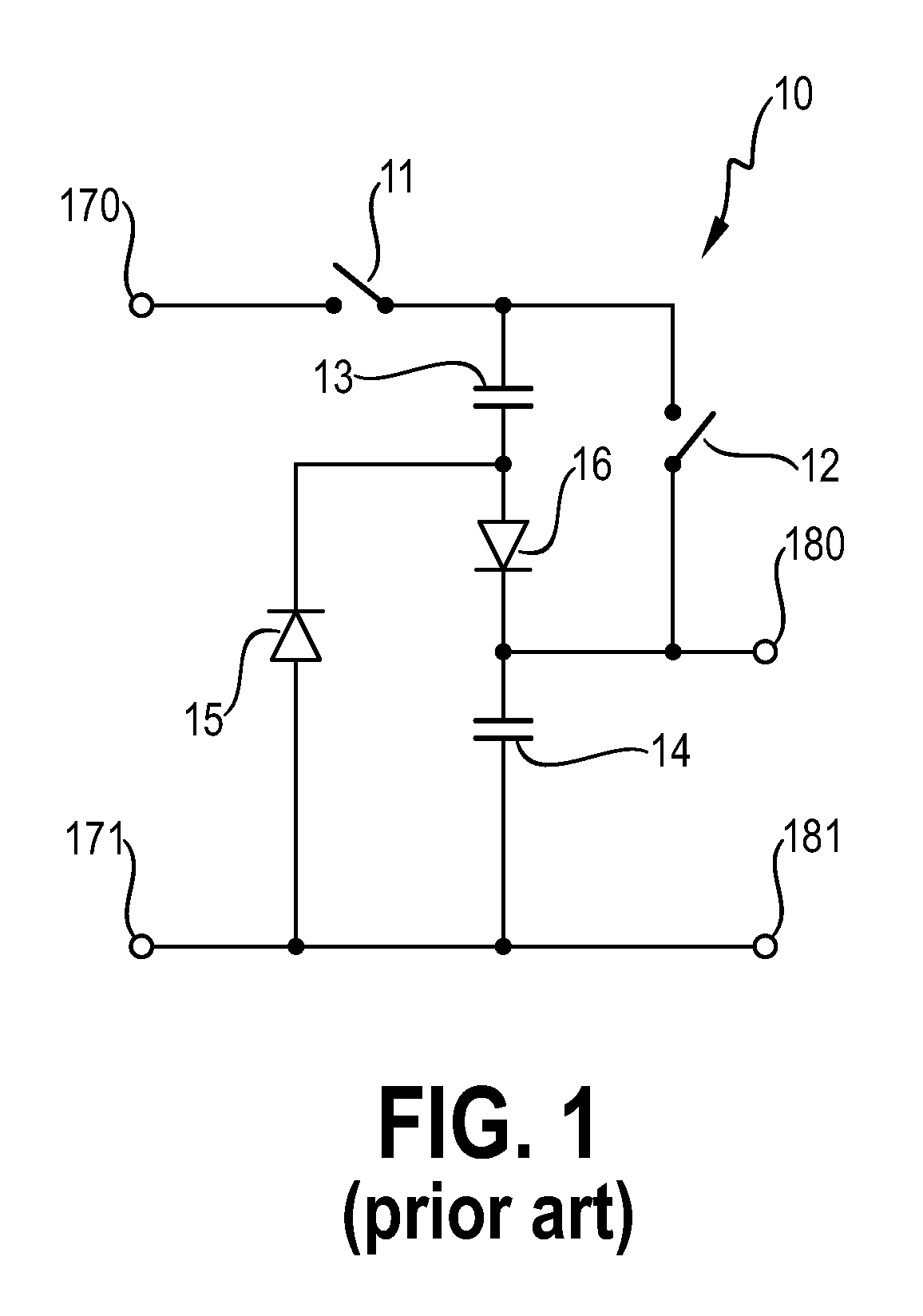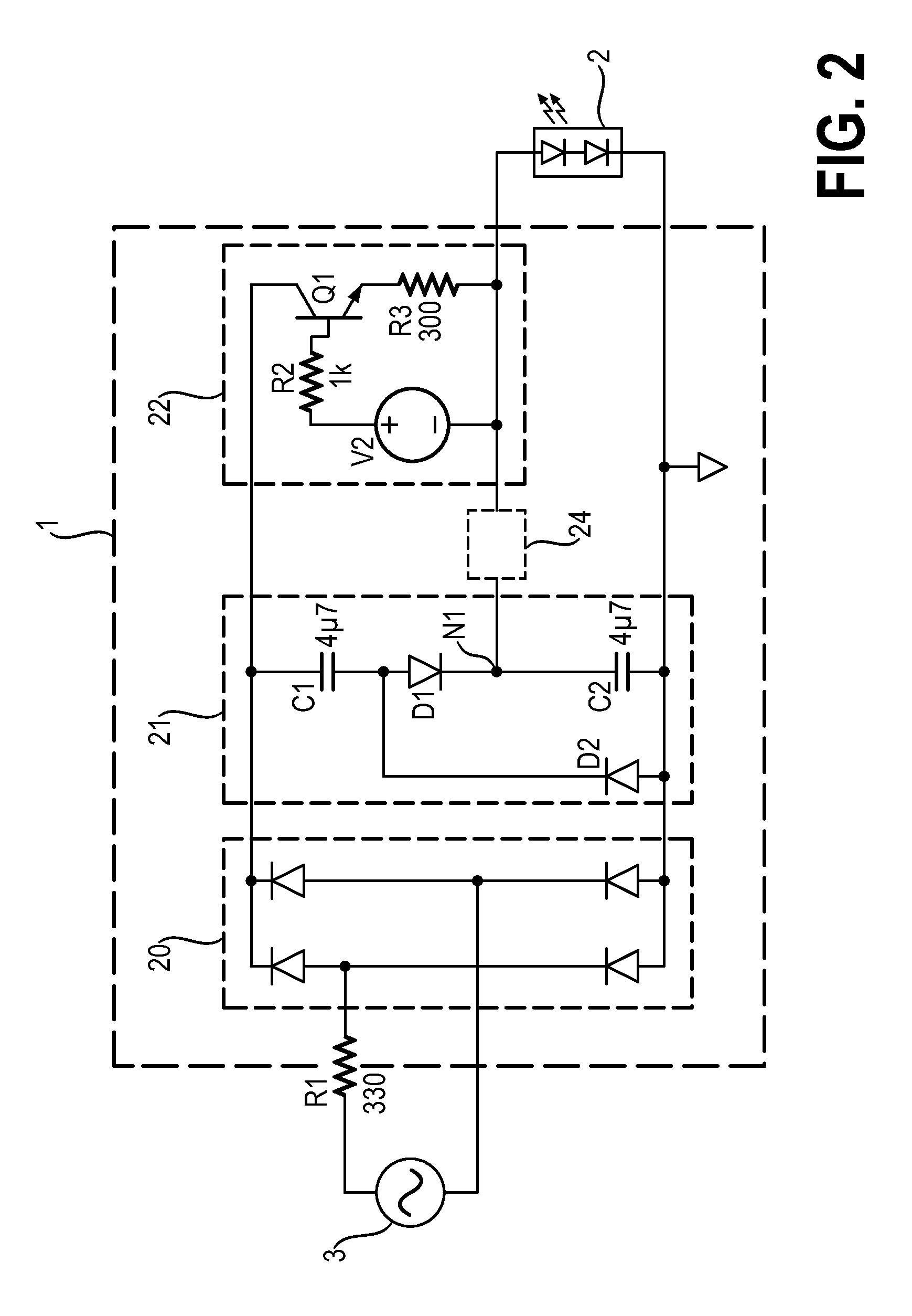Adaptive circuit
- Summary
- Abstract
- Description
- Claims
- Application Information
AI Technical Summary
Benefits of technology
Problems solved by technology
Method used
Image
Examples
Embodiment Construction
[0041]FIG. 1 shows a prior art adaptive circuit 10 of the type described in
[0042]JP 5709736 for stepping down an input voltage applied across input terminals 170, 171 in order to obtain a lower voltage for a load connected across output terminals 180, 181. This type of circuit is suited for small device applications such as hand-held devices, where a transformer would be unsuitable owing to its size and weight. The input voltage can be a DC voltage or a rectified AC voltage. A first switch 11, a first capacitor 13, a diode 16 and a second capacitor 14 are connected in series. A second diode 15 is connected in parallel with the first diode 16 and the second capacitor 14. A second switch 12 is connected across the first capacitor 13 and first diode 16. To step down the input voltage, the first and second switches 11, 12 are switched alternately. When the first switch 11 is closed (and the second switch 12 is open), the series-connected capacitors 13, 14 are charged and the load is dri...
PUM
 Login to View More
Login to View More Abstract
Description
Claims
Application Information
 Login to View More
Login to View More - R&D
- Intellectual Property
- Life Sciences
- Materials
- Tech Scout
- Unparalleled Data Quality
- Higher Quality Content
- 60% Fewer Hallucinations
Browse by: Latest US Patents, China's latest patents, Technical Efficacy Thesaurus, Application Domain, Technology Topic, Popular Technical Reports.
© 2025 PatSnap. All rights reserved.Legal|Privacy policy|Modern Slavery Act Transparency Statement|Sitemap|About US| Contact US: help@patsnap.com



